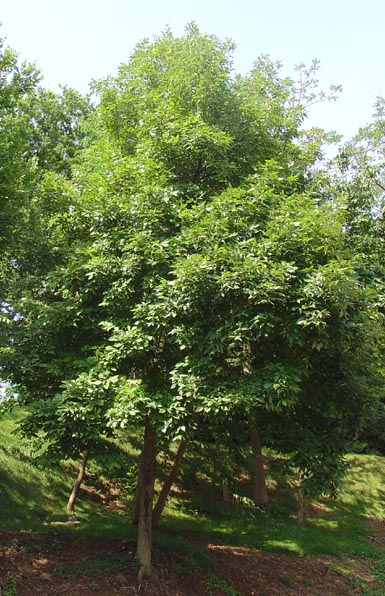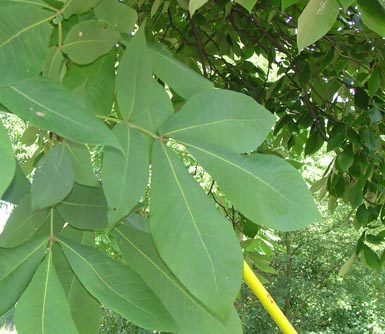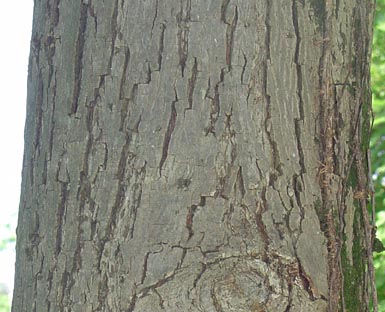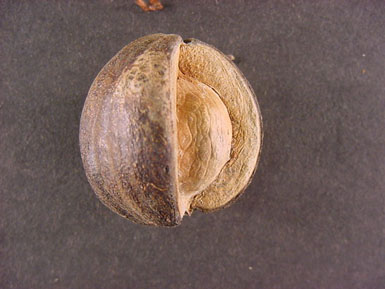Form: The tree is medium to large in size reaching height of 65 to 100 ft. and a 1 to 1 1/2 ft. dbh. The crown is open and rounded. The trunk is often swollen at its base.

Leaves:
Arrangement: alternate, compound; mostly 7-9 leaflets
Shape: lanceolate
Margin: serrate
Texture: leaflets, rachis, and petiole are tomentose
Venation: parallel

Bark: The bark is dark gray with shallow furrows. It also has low interlacing ridges that form a diamond pattern.

Twigs and buds: Twigs are stout and pubescent. They also have a 3 lobed leaf scar. The terminal buds are long, reddish-brown, and tomentose.

Flowers and fruit: Female and male flowers occur in catkins clusters of 2's and 3's. However, male flowers only occur in 3's. The fruit has a thick dark reddish brown husk and contains a light reddish brown nut.

Distinguishing characteristics: The terminal leaflet is larger than others. A thick husk that covers a light reddish brown nut.
Range: Occurs from Massachusetts to southeastern Iowa. South to east Texas and east to eastern Florida.
Silvics: This species has an intermediate tolerance and occurs on dry to mesic uplands sites.
Ecological and cultural importance: The wood is used for tool handles, lumber and pulpwood. Squirrels especially prefer mockernuts. However, black bears, foxes, and beavers also feed on the nuts. The twigs are also browsed by white-tailed deer. Also noted as the most abundant species of the hickories.